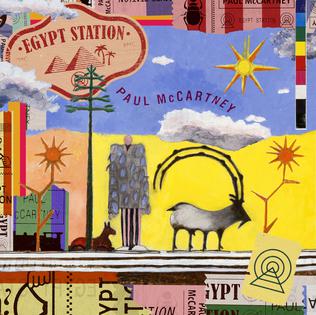
After an album of all-Dolly originals, perhaps it was inevitable that the pendulum would swing back the other way and we’d get another covers album. Luckily, Treasures is a pretty good one, even if it can’t help but feel inessential by its very nature. Dolly’s last covers album, The Great Pretender, was back in 1984, during her peak pop star era, and felt very much like it was trying to fit into the mold of the times with synth-heavy arrangements. Treasures doesn’t exactly avoid the trappings of its decade, but feels more organic on the whole.
Treasures is Dolly’s first album with a new label; after her contract with Columbia expired, she decided to join Doug Morris over at Atlantic Records, as she claimed he was the only executive that really took her seriously as an artist. After Morris got pushed out of Atlantic, he started his own label Rising Tide Records, partnering with MCA, and Dolly followed him there. She also started her own imprint, Blue Eye Records, though I’m not sure how all that businessy stuff works. Maybe with all that tumult, a covers album felt like a soft landing.
The album is mostly made up of hits from the 70s and 80s, ranging from the expected country standards to singer/songwriter stuff and pop chestnuts, all delivered in her signature country style, polished to a blinding sheen. It kicks off with her cover of Cat Stevens’ “Peace Train,” beginning with a sound you might not expect to hear on a Dolly Parton album: the indelible tones of South African vocal group Ladysmith Black Mambazo. Evidently Dolly wanted a backing choir for the song but couldn’t find what she was looking for until she heard the group singing in a Lifesavers commercial and sought them out. They mostly take a backseat during the verses, but get an extended intro and outro to show their stuff. Basically any recording is improved by the presence of Ladysmith Black Mambazo, and Dolly blends with them surprisingly well.
I give credit to Dolly and her producer Steve Buckingham for choosing a set of songs that digs a little deeper to find its chestnuts. As you might expect, her takes on country tunes like Merle Haggard’s “Today I Started Loving You Again,” Charlie Rich’s “Behind Closed Doors” or Carl Butler and Pearl’s “Don’t Let Me Cross Over” are all easily nailed by Dolly and her band, the latter even feeling like something she could’ve written with its tale of a woman tempted to cheat on her partner. Other country tunes work even better when they introduce new elements, like Los Lobos’ David Hidalgo playing accordion and singing a Spanish verse on “Before the Next Teardrop Falls,” which is fitting given that original artist Freddy Fender did the same thing.
There’s quite a few guests on the album, from the aforementioned Hidalgo to Union Station’s Alison Krauss and Dan Tyminski, Blues Traveler’s John Popper, and the Mavericks’ Raul Malo. They mostly take a back seat, lending some lovely, ethereal harmonies in the case of Krauss and Tyminski. Popper gets to do his thing all over “Today I Started Loving You Again,” which might be the most 90s part of the album. The Mavericks are one of my favorite country groups of the era, so I was hoping Malo would get a bit more of a showcase, but he’s just there to back Dolly up on “Don’t Let Me Cross Over.”
The covers are all pretty straightforward, but that doesn’t mean Dolly and her band don’t work magic with them at times. Probably the most unexpected choice is her cover of Neil Young’s melancholy, stoned anthem “After the Gold Rush,” its simple piano arrangement transformed into downtuned guitar, ethereal vocals, and thudding drums. Dolly naturally takes out any drug references, but her plaintive voice still works wonders. Even better is the final track, her take on “For the Good Times.” Written by Kris Kristofferson and first performed by Ray Price, it’s a stately song to begin with, but Dolly transforms it into a lush, jazzy, American Songbook-esque standard, her voice adorned with guitar, piano, and subtle strings. It’s a beautiful, heartwrenching song about clinging to a love that’s run its course, and it’s an absolutely transportive moment to end this collection.









